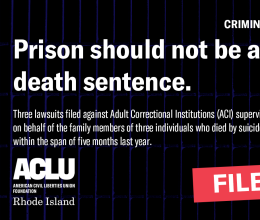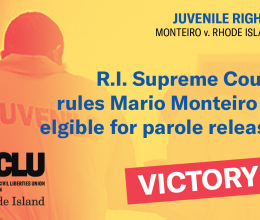By Johanna Kaiser, communications & development associate
Every year, SWAT teams across the country conduct an estimated 45,000 raids. These raids are often not done to take down dangerous, large-scale criminal enterprises but are instead done to search for drugs in the homes of American families. In fact, a recent report by our national office found that only very rarely are heavily armed SWAT teams used for their original purpose of handling hostage and barricade situations.
And, unfortunately, we’ve seen the results of these heavily armed raids in neighborhoods just like ours. In Arizona, an Iraq War veteran was shot 60 times during a drug raid. A 7-year-old girl in Michigan was killed after police, confused after throwing a deafening and blinding "flashbang" into her grandmother’s home, mistakenly shot her. The list goes on.
A recent Providence Journal article discussed SWAT teams in Rhode Island. From the article:
Col. Steven O'Donnell, superintendent of the state police, said that he and the SWAT commander weigh the calls from other police departments and determine whether their assistance is necessary. The state police has turned down requests when they determine the risks are too high, especially for innocent people, O'Donnell said. He said he rejected one request from a police department that wanted SWAT officers to assist in a drug raid where three children were in a house. O'Donnell decided the risk was too high for the children and recommended that the police arrest the suspect when he left the house.
It is encouraging to hear that the State Police carefully consider the risks SWAT raids pose to children and innocent individuals and that less drastic measures are recommended. However, the safety of all individuals should be considered when police plan an arrest or prepare search of a home. It’s clear that police can and do conduct searches and arrest individuals suspected of non-violent drug offences without storming a home in the middle of the night in full SWAT gear.








